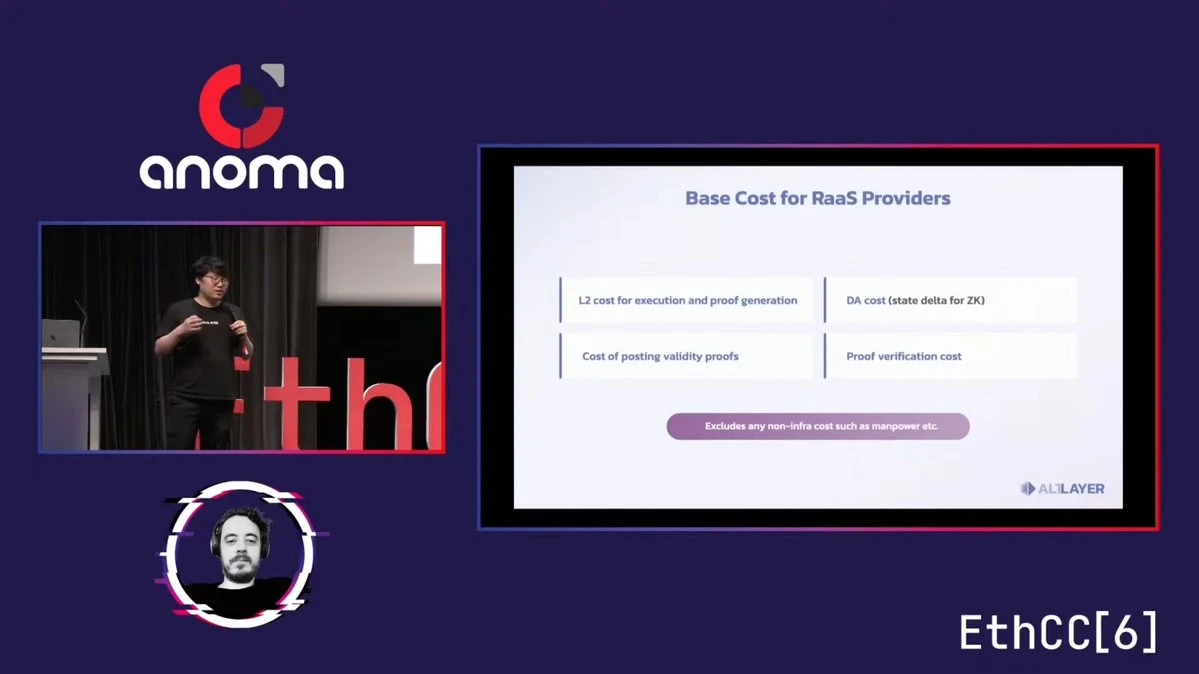
This article is a keynote speech titled "Economic Mechanism for Rollup as a Service" given by the creator of AltLayer, Yaoqi, during his participation in the Ethereum Community Conference in Paris (EthCC). Yaoqi introduces "Why we need RaaS" and "Types and economic models of RaaS".
Compiled by: @Kenwt_ 1, translated by Odaily, with some deletions made without changing the original meaning.
Why do we need RaaS?
Nowadays, the pattern has shifted from monolithic to modular, and we divide the entire stack into different layers. It is obvious that Ethereum has also shifted towards a Rollup-centric approach, where Ethereum will "offload" the execution work to Rollup and become a DA layer in the long run.
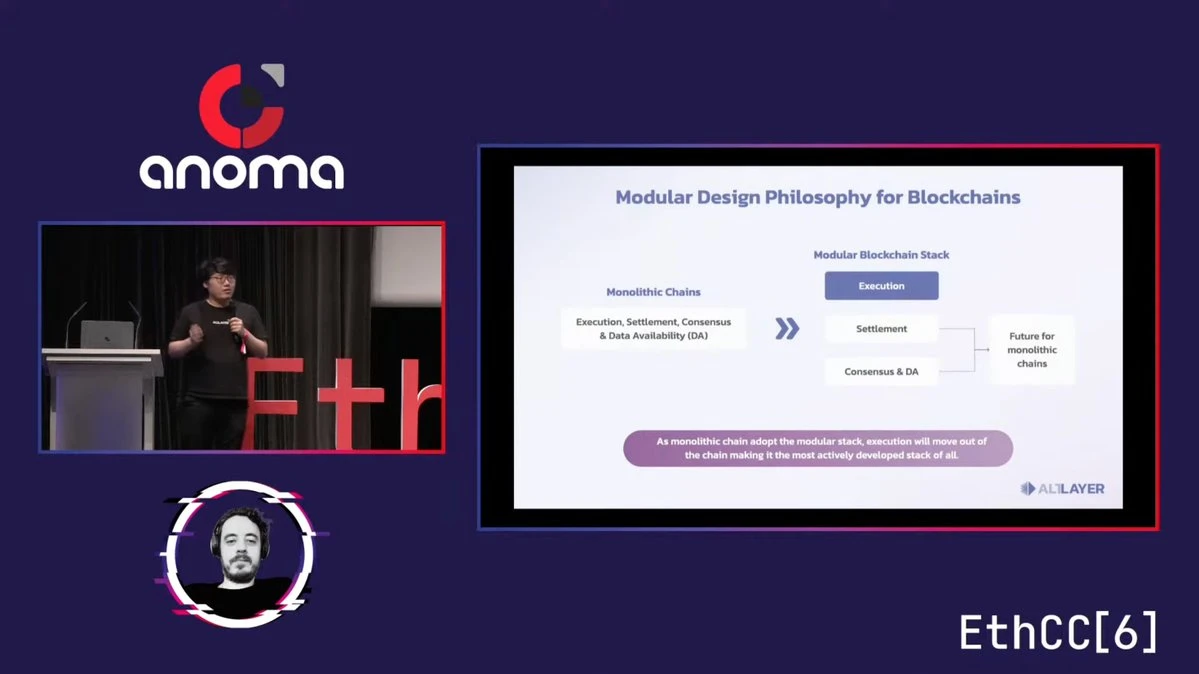
Currently, the scope of the execution layer has been greatly expanded. There are several types of execution layers, such as Optimistic and ZK Rollup. Additionally, there are specific application Rollups that serve different domains of dApps, such as gaming, NFT, and social.
However, too many execution layers can confuse developers with heterogeneity. Moreover, integrating SDKs into the current tech stack and connecting L2 to L1 poses challenges for developers. This is why we need RaaS providers.
For RaaS providers, we can think of them as Software-as-a-Service (SaaS) companies, as they incorporate SDKs and different tech stacks into their solutions. If developers want to release rollups on Ethereum, they simply need to leverage RaaS to quickly split the rollups and then publish the data on Ethereum.
We can see that the RaaS ecosystem is also quite extensive, consisting of vendors who provide SDKs, shared sequencers, and no-code tools. Nowadays, developers/users can launch their programs using a no-code dashboard in just a few minutes, which is a significant improvement from 6-7 years ago.
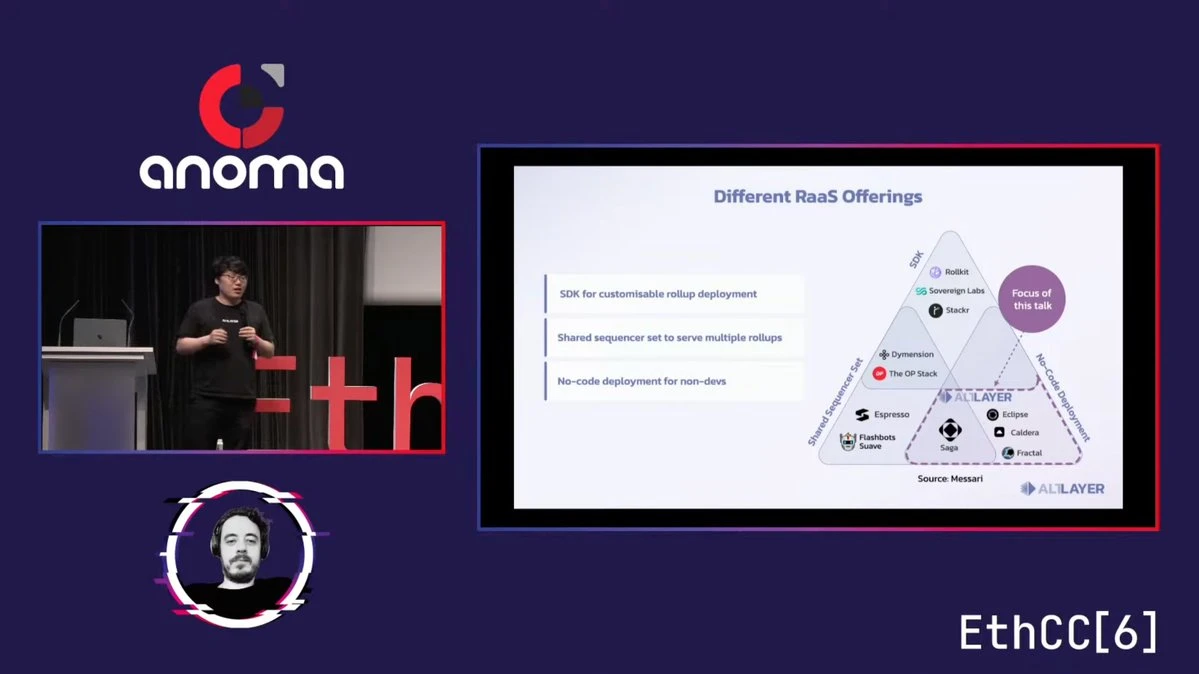
RaaS offers many benefits, such as flexibility, low cost, and fast deployment, as dApps can split out fully customized Rollups within minutes. Web2 developers who are unfamiliar with blockchain and Solidity can also confidently use this no-code framework.
The Economic Model of RaaS
RaaS can be considered as the AWS of the encryption industry because developers can quickly split out L2 without worrying about it. But how to monetize the RaaS solution? One way is to adopt the SaaS model, where providers directly charge developers for splitting out L2, just like AWS/GitHub.
In the SaaS model, the advantage lies in its simplicity and directness, with mature payment solutions such as Stripe and cryptocurrency payments through Coinbase. We can also implement tiered pricing for developers and users based on free mode and free credit limits, and then charge based on actual usage.
Although the SaaS model has simplicity and advantages, if we want to apply this model to RaaS in the cryptocurrency field, we will face complexity. Therefore, to better understand the economic aspect of RaaS, we will analyze the steps, costs, and revenue of Rollup and RaaS.
Starting from the Rollup workflow, this process involves aggregating user txns, executing txns, composing blocks, and submitting data to L1 in order. Typically, there are fraud/verification proofs on L1, and smart contracts are used to verify proofs and challenge sequencers.
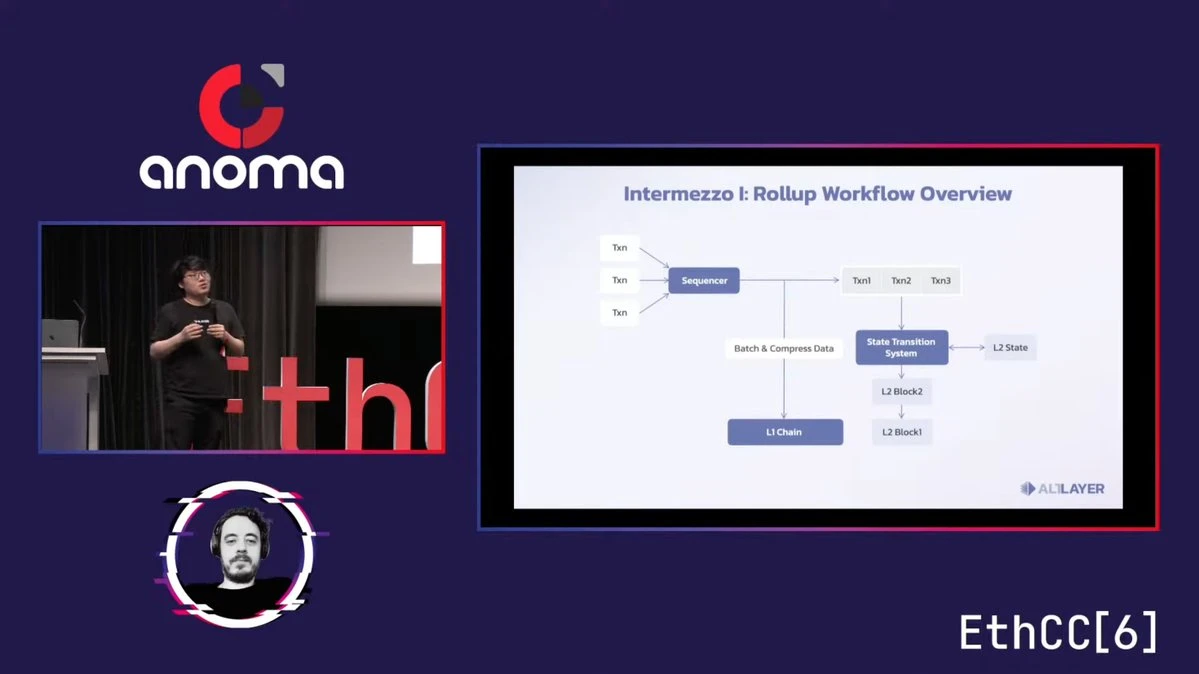
As we may encounter when using Optimism, Arbitrum, and other products, it is obvious that fees can vary greatly depending on the period of time we execute txns. Fees are not fixed because we need to pay for L2 fees as well as the fees for the sequencer to publish data on L1.
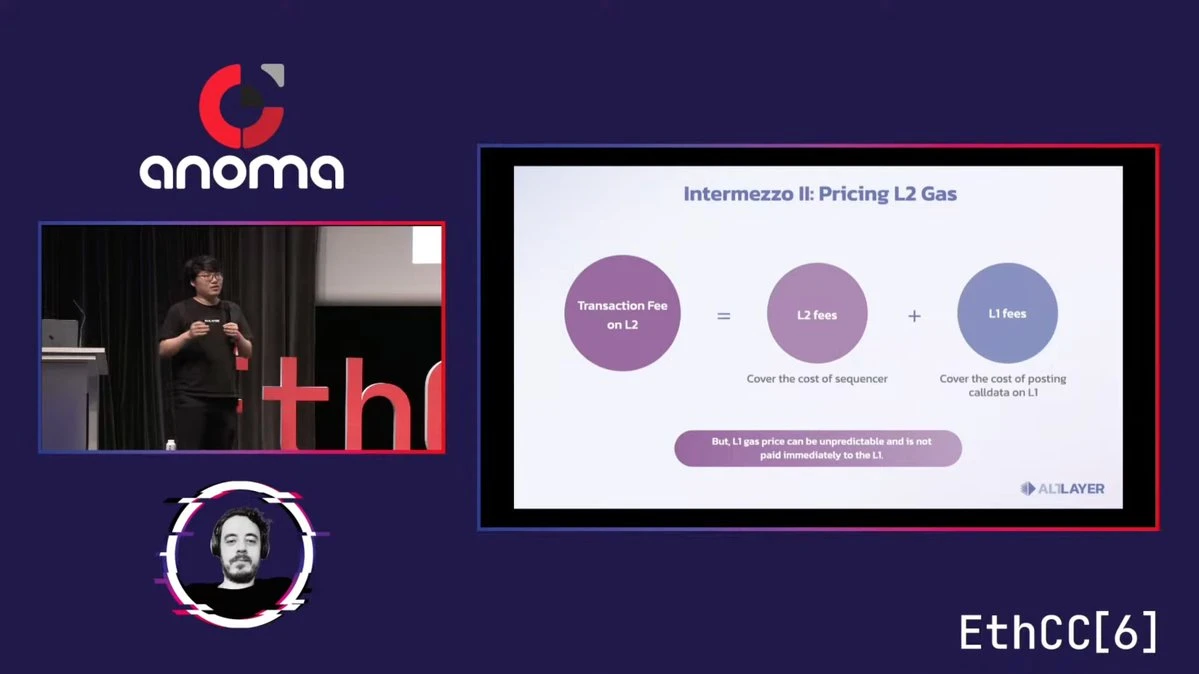
It should be noted that L2 fees are constant because it can handle a large number of off-chain txns. However, since data is regularly published to L1, the fees depend on the number of txns processed during that period of time. If there are more txns, the average fees will be higher.
For most L2s, additional fees are charged due to the uncertainty of L1 gas when data is published. Data shows that Optimism and Arbitrum have earned millions of dollars from fees charged to users (minus the data storage fees paid to Ethereum).

To understand the economic benefits of Rollup, here are the general profits of Rollup:
User fees: L1 data publication + L2 operator + L2 congestion fee (high traffic)
Operator cost: L2 operator + L1 data publication cost
Operator revenue: User fees + MEV
Operator profit: L2 congestion fee + MEV
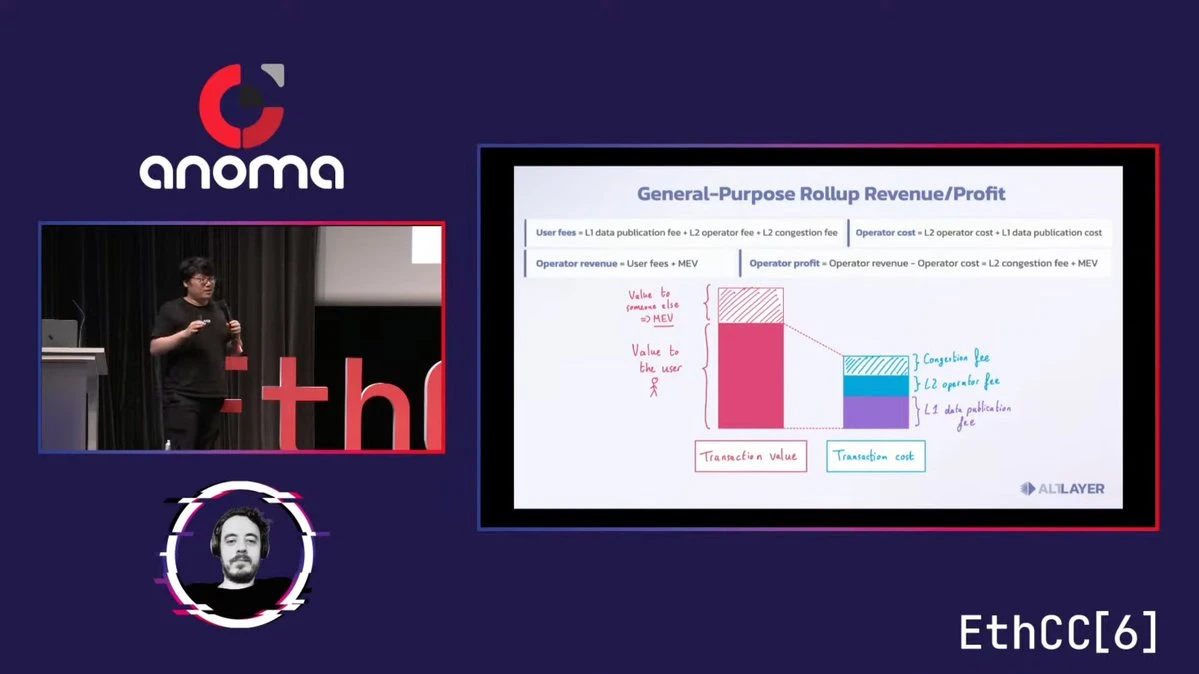
As an RaaS provider, if we offer similar services to operate a general L2, the revenue, cost, and profit should be very similar. In reality, the operator's revenue is slightly different because we can charge customers service fees, such as games and NFT projects.
However, most dApps prefer to have their own chain dedicated to the application, plus zero gas, to provide a seamless user experience. Therefore, RaaS providers cannot charge user fees and MEV (preferential FCFS), so overall profits will be much lower than providing a general L2.
Therefore, here is the operator profit formula for RaaS providers:
General purpose: U+S-O-D
Specific application: S-O-D
We can increase the operator's profit by increasing U, S (application SaaS mode), and reducing O, D (cost-effective alternatives such as Eigenlayer and Celestia's DA).
Note: U: User fees; S: Service fees; O: L2 operator cost; D: L1 data publication cost.
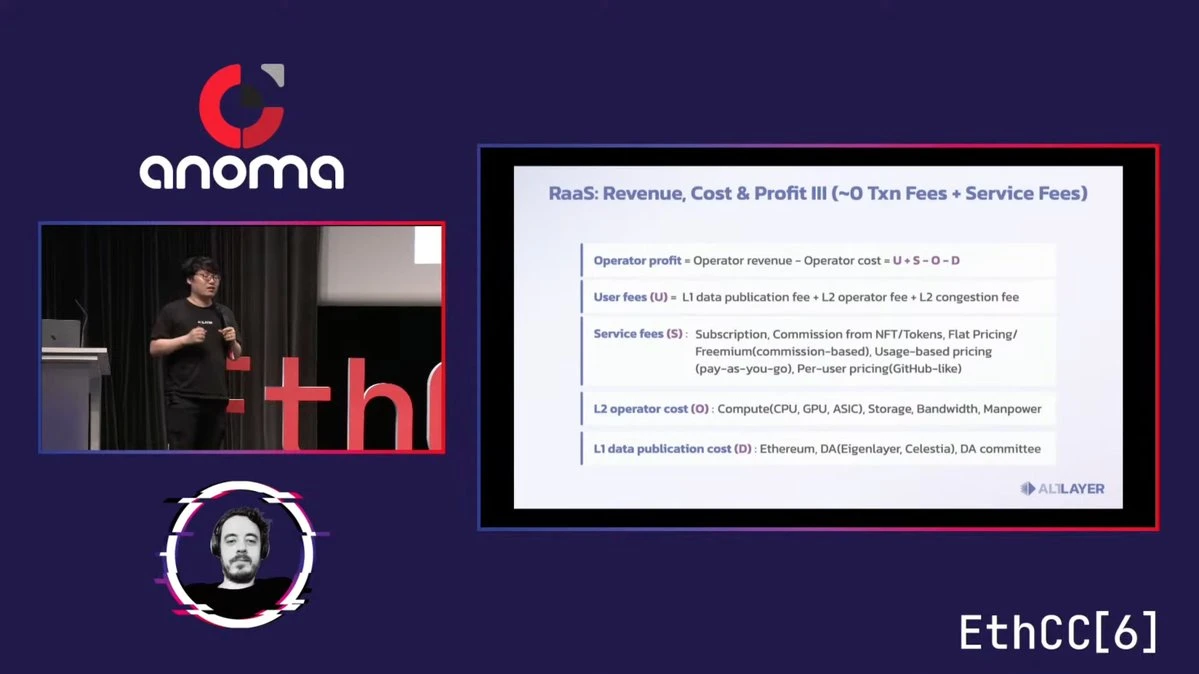
After discussing the economic formula for RaaS, Yaoqi also shared his views on the cost of RaaS providers based on his own experience. For the cost of RaaS, most of it comes from L2 operations, typically Sequencers and Verifiers, as well as DA costs.
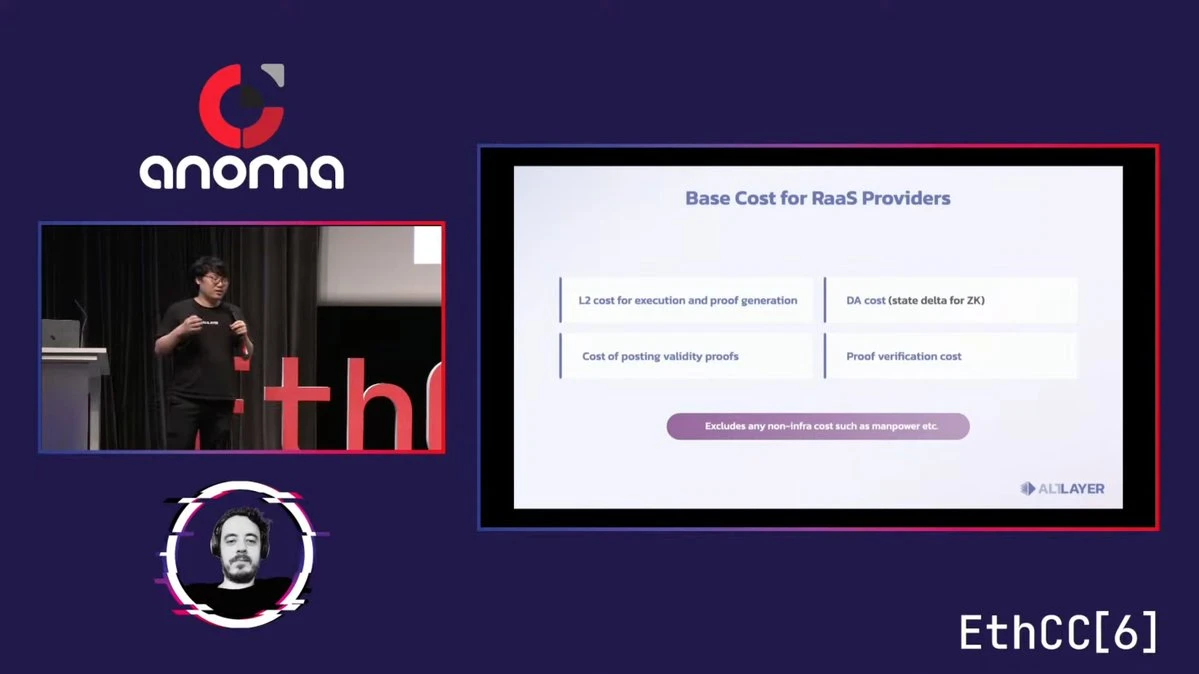
According to Yaoqi's research, Optimistic has much lower costs compared to ZK because it doesn't require running expensive machines to generate proofs. However, ORU has a longer challenge period and needs to consider more data publishing issues, so there's a trade-off to consider.
Regarding the current status of RaaS, there are various pricing plans such as unified pricing, tiered pricing, and other models, which are highly relevant to use cases like NFT Minting and gaming. Additionally, free points may be offered to partners.
In terms of actual use cases for RaaS, Altlayer has been developing for almost 2 years. During this time, many projects have utilized Altlayer's services to support NFT events, NFT football ticketing, darkforest_eth competitions, and they adopt a SaaS payment model in these projects.
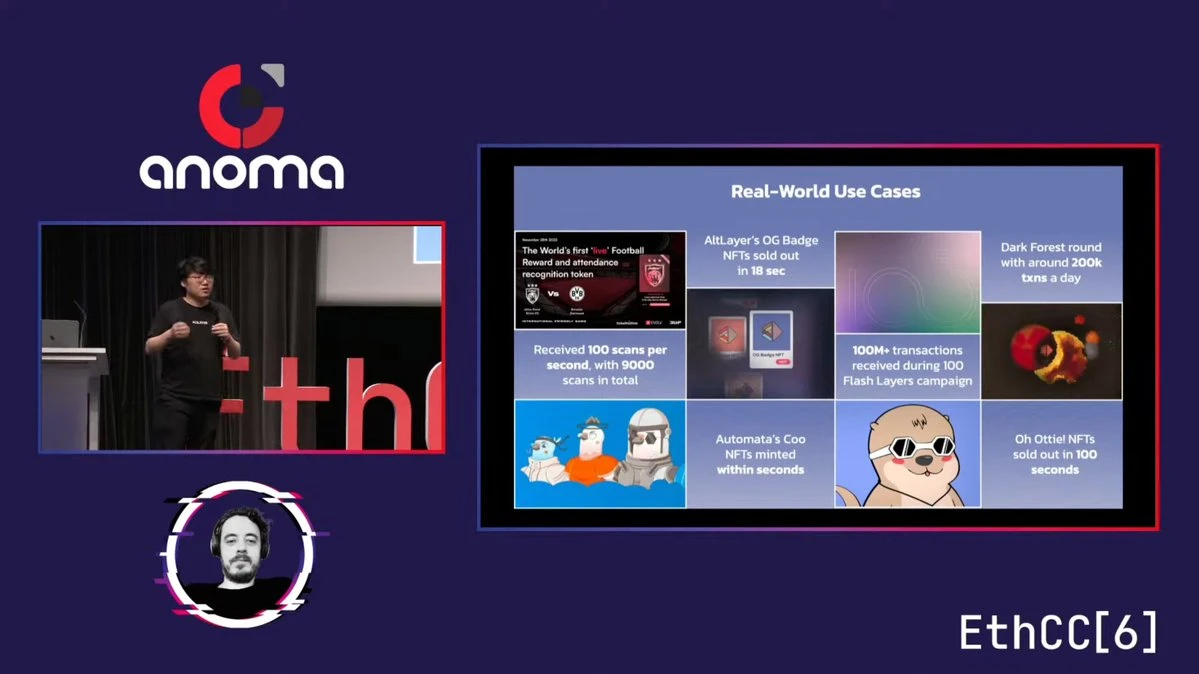
Furthermore, Beacon Layer is introduced, which separates AltLayer from traditional web2 SaaS and brings decentralization to RaaS. It can be seen as a coordination layer, where Beacon Layer assigns dedicated operators when users request to activate Rollup.
AltLayer's RaaS Launchpad's first version allows users to split rollups in a centralized way. However, with the release of Beacon Layer version, it will become decentralized, as anyone can join the network as an orderer and have the opportunity to be selected to serve dedicated launchers.
Personal Opinion
Although Optimistic and ZK Rollup have made efforts in scalability, security, and interoperability, such as:
Ethereum scaling solution MetisDAO officially announced that it is building the first hybrid Rollup by combining optimistic rollup architecture with zero-knowledge proofs, aiming to provide secure and developer-friendly L2 for Ethereum developers to deploy all types of decentralized applications;
Web3 social graph protocol Lens Protocol announced the launch of the Optimistic L3 scaling solution Bonsai internal beta version, which can handle large-scale off-chain transactions of Polygon and reduce costs. Unlike L2 solutions, Bonsai does not compress transactions to L1, but sends and stores them on the data availability layer;
zkSync announced the launch of ZK Stack, a modular open-source framework for building custom zkRollups, aiming to give developers full autonomy, from choosing data availability mode to using projects' own decentralized token orderers. ZK Stack provides two key features: sovereignty and seamless connectivity. These zkRollup chains run independently, relying only on Ethereum L1 to achieve their activity and security, while cross-chain bridges facilitate interconnectivity of each chain, enabling trustless, fast, and cost-effective interoperability.
However, everyone is building infrastructure without applications. In other words, a supermarket may be large, well-stocked, and inexpensive, but it is useless without people.










